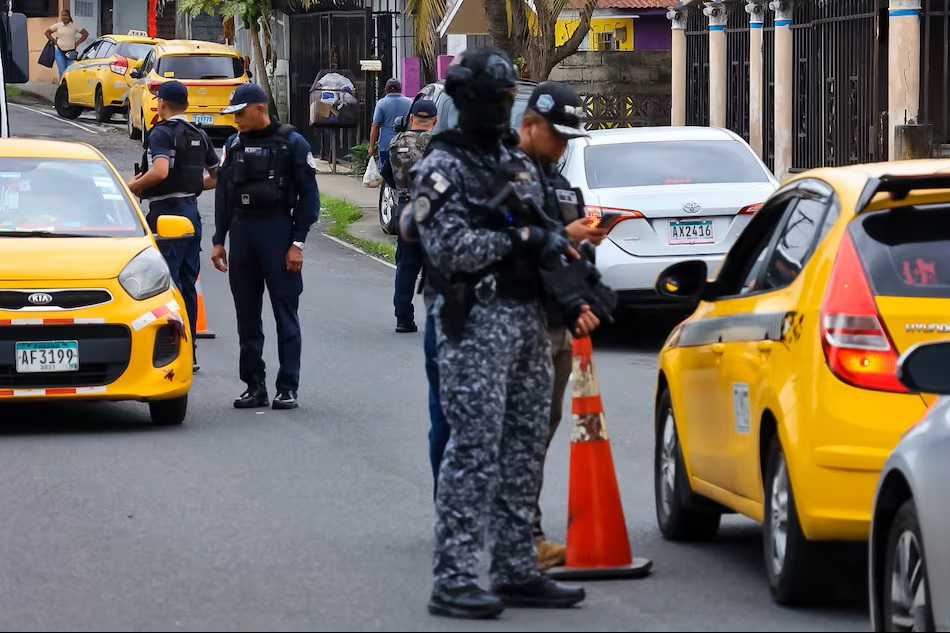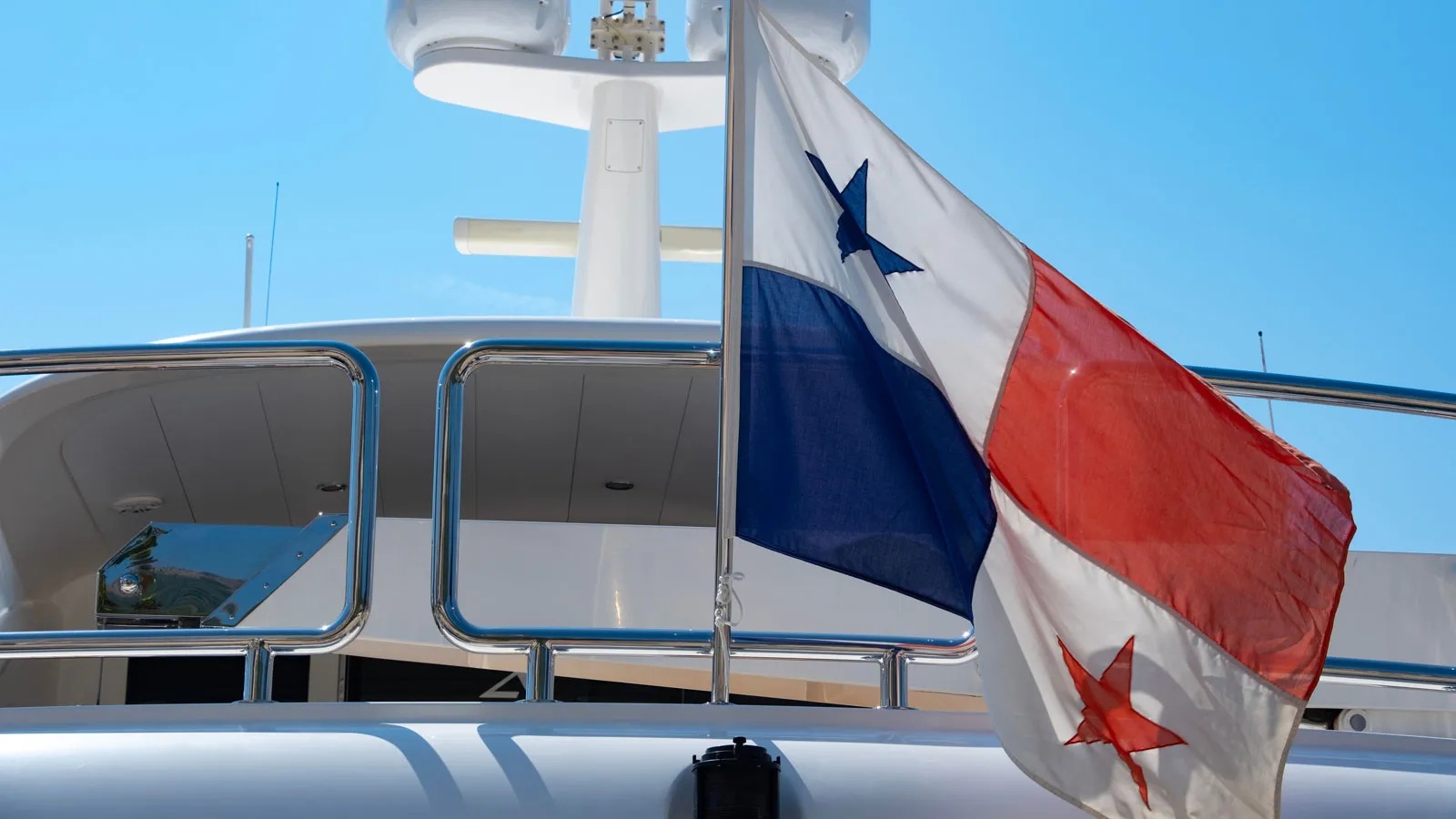D-Day is 80 Years Old Thursday June 6th
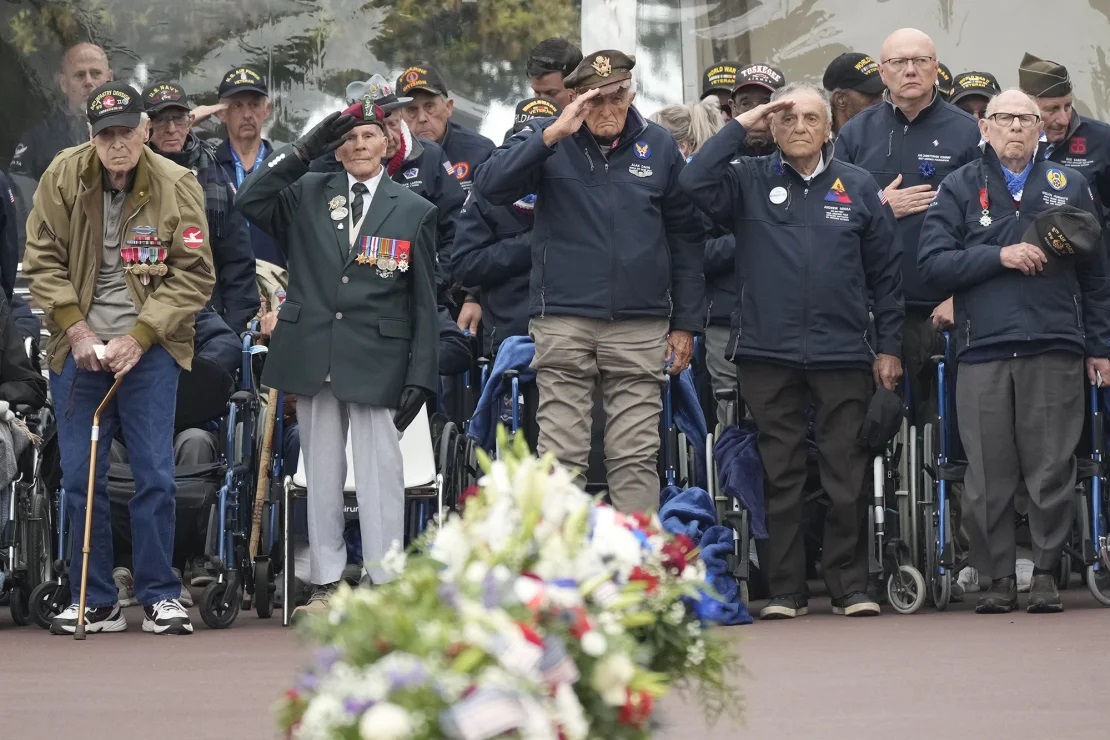
D-Day is Thursday June 6th. Be watching for all of the celebrations on the major news channels. This year will likely be the last major D-Day anniversary with living veterans in attendance. Organizers are going all-out. Allied forces are seen landing on the beaches of Normandy on June 6, 1944.
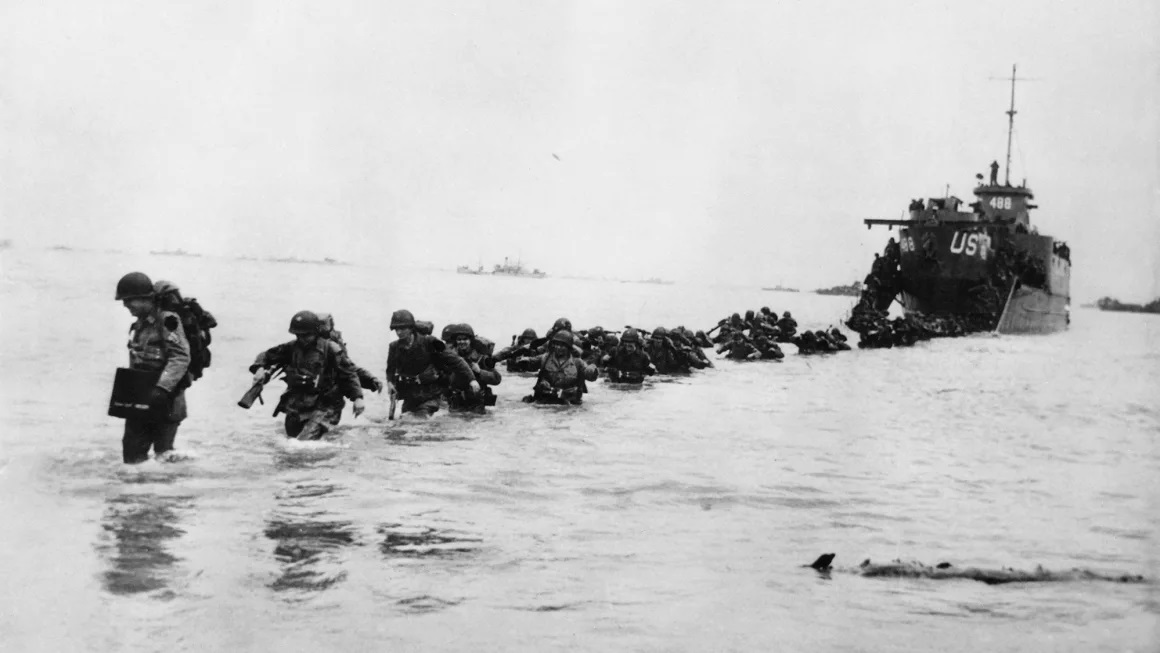 Thursday marks the 80th anniversary of D-Day. At 99 years old, Jack Foy is considered the youngster among his group of friends that fought in World War II. But their advanced age isn’t going to stop them from making the transatlantic journey to honor their fallen comrades on the 80th anniversary of D-Day. On June 6, Foy – a survivor of the Battle of the Bulge and his fellow American veterans will join dignitaries and heads of state from around the world to commemorate the approximately 160,000 Allied troops who, eight decades ago, carried out the largest seaborne invasion in human history. Foy told news media that he has been to several memorials in France since 2014. The emotional resonance of each trip grows stronger year after year, he said, because these veterans know each trip could be their last. “We realize we’re getting to the end of our time,” Foy said. They are not alone. Although the Legions throughout the world are losing some of their finest to father time, they still dress up in their finest, with medals, pins, berets, white gloves, and ties on June 6th every year to celebrate this very special day.
Thursday marks the 80th anniversary of D-Day. At 99 years old, Jack Foy is considered the youngster among his group of friends that fought in World War II. But their advanced age isn’t going to stop them from making the transatlantic journey to honor their fallen comrades on the 80th anniversary of D-Day. On June 6, Foy – a survivor of the Battle of the Bulge and his fellow American veterans will join dignitaries and heads of state from around the world to commemorate the approximately 160,000 Allied troops who, eight decades ago, carried out the largest seaborne invasion in human history. Foy told news media that he has been to several memorials in France since 2014. The emotional resonance of each trip grows stronger year after year, he said, because these veterans know each trip could be their last. “We realize we’re getting to the end of our time,” Foy said. They are not alone. Although the Legions throughout the world are losing some of their finest to father time, they still dress up in their finest, with medals, pins, berets, white gloves, and ties on June 6th every year to celebrate this very special day.
 With major commemorations held every five years, organizers and government officials concede that this year’s event could be the last to involve living veterans, whose stories of the horrors of war have become particularly poignant given that Russia’s invasion of Ukraine has brought a large-scale ground war back to Europe for the first time since 1945. “We are perfectly aware that for these centenarians, this is maybe the last chance to return to the beaches where they landed, where they fought and where their brothers-in-arms fell,” said Gen. Michel Delion, the CEO of the French government agency in charge of the French commemoration efforts, Mission Liberation. The various countries putting together the event are now planning what is expected to be the most extensive D-Day commemoration in history – both in terms of size and, crucially for elderly veterans, logistics. Approximately 150 American veterans are expected to travel to Normandy – about two dozen of whom actually fought on D-Day. The youngest is 96. Fifteen Canadian veterans, including three or four that fought on D-Day, are traveling with the Canadian delegation, according to John Desrosiers, the director of international operations for Veterans Affairs Canada. Desrosiers said the youngest traveling with the group is 98 and the eldest are 104. Below are two Canadian brothers, one navy, one army, who coincidentally met up in a landing craft on D-Day. Unfortunately only one of the brothers was to return home safely. The other lies in the fields of many crosses.
With major commemorations held every five years, organizers and government officials concede that this year’s event could be the last to involve living veterans, whose stories of the horrors of war have become particularly poignant given that Russia’s invasion of Ukraine has brought a large-scale ground war back to Europe for the first time since 1945. “We are perfectly aware that for these centenarians, this is maybe the last chance to return to the beaches where they landed, where they fought and where their brothers-in-arms fell,” said Gen. Michel Delion, the CEO of the French government agency in charge of the French commemoration efforts, Mission Liberation. The various countries putting together the event are now planning what is expected to be the most extensive D-Day commemoration in history – both in terms of size and, crucially for elderly veterans, logistics. Approximately 150 American veterans are expected to travel to Normandy – about two dozen of whom actually fought on D-Day. The youngest is 96. Fifteen Canadian veterans, including three or four that fought on D-Day, are traveling with the Canadian delegation, according to John Desrosiers, the director of international operations for Veterans Affairs Canada. Desrosiers said the youngest traveling with the group is 98 and the eldest are 104. Below are two Canadian brothers, one navy, one army, who coincidentally met up in a landing craft on D-Day. Unfortunately only one of the brothers was to return home safely. The other lies in the fields of many crosses.



The British defense ministry said it expects more than 40 WWII veterans at the various events in Normandy. Those vets will be joined by about 25 heads of state and government, including the US President, the British Prime Minister and the Canadian Prime Minister. Russian President Vladimir Putin was not extended an invitation due to the war in Ukraine, while Ukrainian President Volodymyr Zelensky is planning on attending, according to a French presidential source. With so many heads of state in town, the security measures in place are intense. A massive contingent of 12,000 security personnel will be deployed on June 6, the French Interior Ministry said. Heavy travel restrictions put in place by French authorities will also effectively cut off the Norman coastline and the normally sleepy towns that dot it from the rest of the country. Yet June 6 typically sees these elderly men criss-cross the region to hit a full day’s itinerary, including national ceremonies held at the American, British and Canadian cemeteries; the big international commemoration put on by France; and then, if they have the energy, more local events. Most veterans also travel with an entire phalanx of medical personnel. The charity that organized Foy’s trip, the US-based Best Defense Foundation, is bringing three doctors and 10 nurses to accompany the 50 veterans they are flying over from the United States. Each veteran will travel with a personal caregiver – typically a family member or a friend. Officials say they are going to incredible lengths to treat veterans like royalty – as they are feted by actual royals. King Charles III will be there on June 6 – his first overseas trip since being diagnosed with cancer – alongside Queen Camilla and Prince William, Buckingham Palace said.

Representatives from the royal families of Belgium, Monaco, the Netherlands and Norway are also expected to attend. Delion’s team has been holding rehearsals and timing wheelchair runs for the French-led international ceremony. They are also considering having veterans enter at the same time as heads of states and other dignitaries to reduce their waiting time. American and Canadian organizers told the media that they will seat veterans last at their respective national ceremonies to keep them comfortable. The general public at the American event, for example, may need to be seated about an hour in advance due to security precautions. “We take care of the veterans who served and made the enormous sacrifices that they did in the Second World War,” said Djou. After being postponed 24 hours due to bad weather, D-Day began shortly after midnight on June 6, 1944, when paratroopers dropped into German-occupied France to lay the groundwork for the incoming invasion. Allied planes and warships began their bombardment at about 6:30 a.m., with troops hitting the beaches shortly after. They landed on a stretch of coastline 50 miles long, organized into five beaches codenamed Gold, Juno, Omaha, Sword and Utah. The Americans were responsible for Omaha and Utah. The British led the assault on Gold and Sword, while the Canadians handled Juno. Though 4,414 Allied troops died that day and it would take more than a month to achieve one of D-Day’s main objectives – liberating the strategically important city of Caen – the landings were considered a success. Allied troops had successfully made it onshore in France; it was the beginning of the end for Hitler and Nazi Germany.

The sheer drama of the event has, for decades, captured the American public imagination, because of both the magnitude of the invasion and the fact that it was a “digestible” turning point in the war, according to Ben Brands, a military historian at the ABMC. “World War II, especially in Europe, becomes this ongoing battle from basically the moment troops land on the beaches of D-Day until Germany ultimately surrenders. The human mind needs to cut that up into digestible stories, and D-Day is a really powerful, discrete event that is so critical for everything that comes after,” Brands said. “There’s just so many powerful stories that come out of D-Day.” As time has passed, veterans have played a crucial role in passing down the stories of D-Day. Their gripping, visceral first-hand accounts are better teachers of history than any textbook. But just a fraction of the soldiers who lived through D-Day are still alive. Of the 16.4 million Americans who served in the military during WWII, fewer than 100,000 are expected to still be alive by the end of the year, according to statistics from the US Department of Veterans Affairs. In Canada, there were just 9,297 living Canadian veterans who had served in either WWII or the Korean War as of March 31, 2023, according to the most recent statistics available from Veterans Affairs Canada. The British defense ministry said it does not keep veteran numbers on hand.

It’s unclear what the average age of a WWII veteran is. Given that the median age for an American WWII veteran in June 2020 was 93, according to US Census figures at the time, most surviving vets from Allied forces are likely to now be at least in their late-nineties. By the 85th anniversary in 2029, those who are still living will almost certainly be in triple digits. “People are realizing this generation is passing and they’re passing rapidly now, and it’s important to keep their stories alive, to keep the memories of those who died and are buried at Normandy, but also those who fought and survived because they can no longer be with us for that much longer to tell these stories,” Brands said. “The 80th will be a very powerful event.” Another day of events is taking place in the UK and France to mark the 80th anniversary of the Normandy landings on 6 June 1944, when troops from the UK, the US, Canada, France and others landed in Normandy and attacked German forces. Britain’s wartime prime minister, Sir Winston Churchill, called it “the most complicated and difficult” operation of World War Two, leading to the eventual liberation of France from Nazi occupation. In Portsmouth on Wednesday, the UK’s national commemorative event was led by Dame Helen Mirren. She said: “The presence today of some of those who contributed to that remarkable venture is an extraordinary privilege. Your bravery remains as inspiring now as it was eight decades ago.”
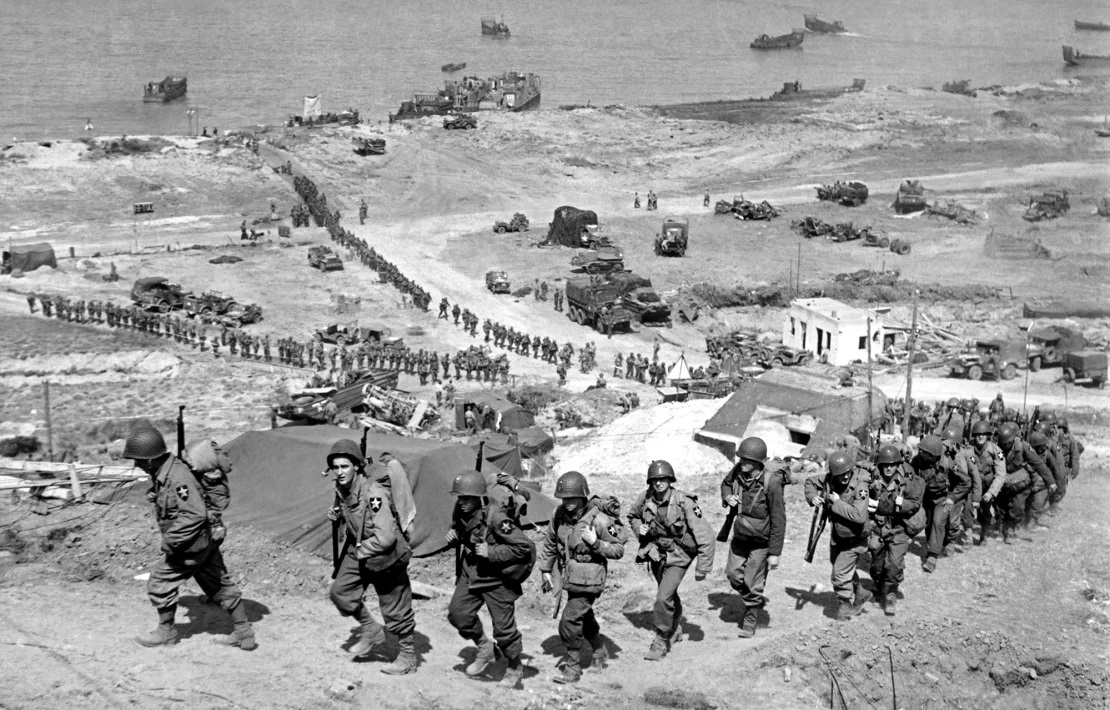
D-Day veteran Roy Hayward was met with a standing ovation when he walked on stage on Southsea Common. He was severely injured in Normandy, both his legs had to be amputated below the knees. He said he represented all the “men and women who put their lives on hold to go and fight for democracy and this country”. The Red Arrows and a pair of Dakota military transport aircraft seen with their invasion stripes took part in a fly-past. King Charles who attended with his wife Queen Camilla, paid tribute to the veterans who embarked in Portsmouth 80 years ago. “It is our duty to ensure that we and future generations do not forget their service and their sacrifice in replacing tyranny with freedom.” More than 300 members of the British, Belgian, Canadian and US military put on a parachute-jump display near Sannerville, Normandy, a designated drop zone on 6 June 1944. At the Bayeux War Cemetery, Royal Air Force veteran Bernard Morgan, 100, from Crewe, saluted the fallen. The Princess Royal attended a commemoration service before meeting veterans, including Fred Ayton, 98, who served in the Royal Navy. Gene Kleindl, 102, from Illinois, who served as medic in the 90th Infantry Division of the US Army, arrived on the beaches of Normandy on D-Day +2. He visited the grave of his friend Ralph Gaddis at the Normandy American Cemetery in Colleville-sur-Mer with his granddaughter Jessica Smith. Along the Normandy coast, people dressed in period uniforms and vehicles can be seen. A man gives a victory sign as he drives a US Jeep through Colleville-sur-Mer. A lone soldier visits the beaches of Normandy, perhaps for his very last time.




